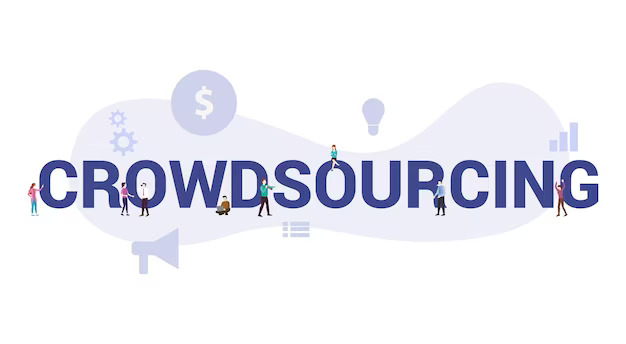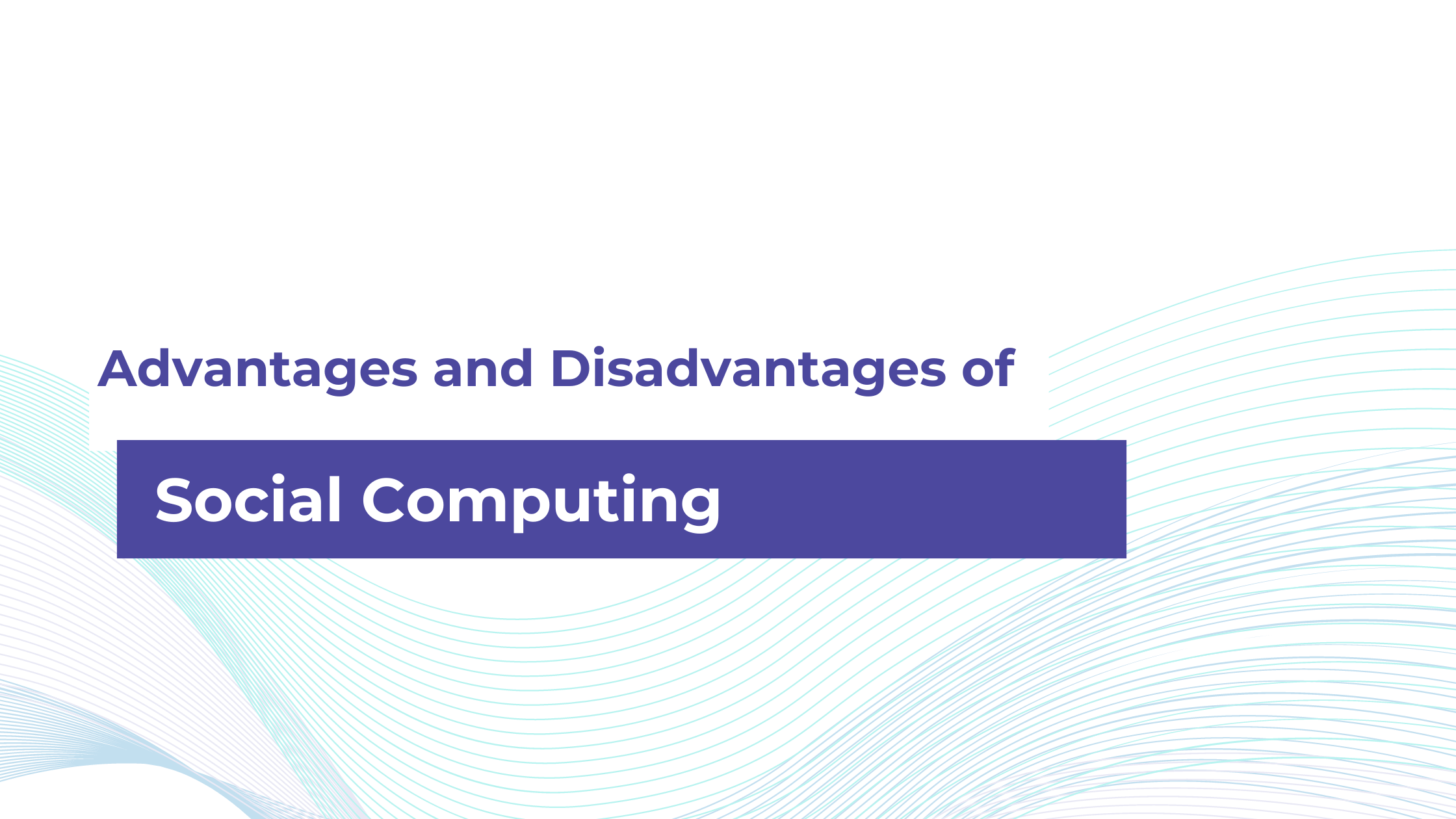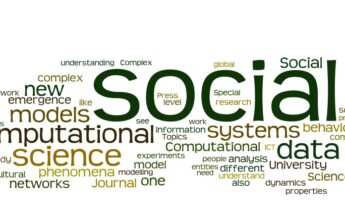Welcome to Social Computing Journal. Advancements in technology have transformed the way we communicate and interact with each other. Social computing, which encompasses a wide range of internet-based technologies, has become increasingly popular in recent years. Social computing platforms allow users to create, share, and interact with content, as well as build communities and engage in social networking. In this article, we will examine the advantages and disadvantages of social computing.
Contents
Advantages of Social Computing:

Improved Communication and Collaboration: Social computing platforms facilitate communication and collaboration in various ways. They allow individuals and groups to connect and interact with each other regardless of geographical boundaries. This means that people can easily communicate with each other in real-time, share ideas, and work together on projects. This improved communication and collaboration can lead to increased productivity and better decision-making.
Greater Access to Information and Resources: Social computing platforms also provide easy access to information and resources. These platforms allow users to share and access information on various topics. This means that people can quickly find the information they need without having to spend hours searching for it. Additionally, social computing platforms often use algorithms to personalize the content that users see, which can help users discover new information that they may not have found otherwise.
Enhanced Social Connections and Community Building: Social computing platforms also provide opportunities for social connections and community building. These platforms allow users to connect with friends and family, as well as make new connections with people who share similar interests. Users can join groups and participate in discussions, which can help them build a sense of community and belonging.
Increased Convenience and Flexibility: Social computing platforms offer users a high degree of convenience and flexibility. They can be accessed from anywhere and at any time, making it easy for users to stay connected and engaged. Additionally, these platforms often offer features such as scheduling tools, file sharing, and video conferencing, which can make it easier to collaborate with others.
Disadvantages of Social Computing:
Privacy and Security Concerns: One of the major disadvantages of social computing is the potential privacy and security concerns. Users may unknowingly share sensitive information, which can be used for malicious purposes. Additionally, social computing platforms may be vulnerable to hacking and cyberattacks, which can compromise the privacy and security of users.

Addiction and Time-Wasting: Another disadvantage of social computing is the potential for addiction and time-wasting. Social computing platforms can be addictive, and users may spend excessive amounts of time browsing and engaging with content. This can lead to decreased productivity and even mental health issues.
Cyberbullying and Harassment: Social computing platforms may also be a breeding ground for cyberbullying and harassment. Users may be subject to online abuse, which can have serious consequences on their mental health and well-being. Additionally, cyberbullying and harassment can discourage users from participating in online communities, leading to a decrease in community engagement.
Spread of Misinformation and Fake News: Finally, social computing platforms may contribute to the spread of misinformation and fake news. Users may unknowingly share false information, which can be harmful and misleading. Additionally, social computing platforms often rely on algorithms to personalize content, which can lead to users being exposed to biased or inaccurate information.
It is important to understand social issues in computing and guide others about the solutions.
Examples of Social Computing Platforms and Their Impact:

Some of the most popular social computing platforms include social media sites like Facebook, Twitter, and Instagram, online communities like Reddit and Stack Overflow, and crowdsourcing platforms like Wikipedia and Kickstarter. These platforms have had a significant impact on the way people communicate, collaborate, and engage with each other.
Conclusion:
Social computing has revolutionized the way we communicate and interact with each other. While it has many advantages, it also comes with several disadvantages, including privacy and security concerns, addiction and time-wasting, cyberbullying and harassment.
Frequently Asked questions
What are the advantages of social computing in terms of communication and collaboration?
Regardless of their geographical location, people may interact and work together thanks to social computing. People may now interact and collaborate on projects, share ideas, and communicate information more easily as a result. A sense of support and belonging can be fostered by creating groups around common interests using social computing platforms.
How has social computing changed the way we interact with others, both online and offline?
The ways in which we can interact and communicate with one another have increased thanks to social computing. In addition, it has caused some people to prioritise their online ties over their in-person relationships and to blur the lines between online and offline interactions.
What are the potential benefits of social computing for businesses and organizations?
Businesses and organizations may benefit from new customer interaction and marketing channels offered by social computing. Additionally, it may make it easier for teams and departments to collaborate and communicate more effectively. Social computing may also give businesses useful information and insights about their stakeholders and customers.
How has social computing impacted privacy and security?
Due to the fact that social computing frequently requires users to reveal personal information in order to access these platforms, privacy and security concerns have arisen. Furthermore, social computing platforms may be susceptible to cyberattacks and data breaches, which could expose sensitive data.
What are the potential negative effects of social computing, such as addiction or cyberbullying?
Social computing has the potential to generate cyberbullying and harassment as well as addictive habits. Social media sites can also distribute fake news and serve as a conduit for inaccurate information.
How has social computing changed the way we consume and share information?
Social computing has facilitated information access and sharing, but it has also produced an abundance of information and blurred the distinction between fact and opinion. Additionally, echo chambers and filter bubbles can be produced through social computing platforms, limiting people’s access to a variety of viewpoints.
What are the implications of social computing on democracy and political participation?
Public opinion has been significantly shaped by social computing, which has also been employed in political action and campaigning. It can, however, also be a source of misinformation and exacerbate societal polarization and conflict.
How has social computing affected our mental health and well-being?
Both positive and bad effects on mental health and wellbeing can be attributed to social computing. Social computing has the potential to foster a sense of belonging and support. On the other hand, it might result in a sense of loneliness and aggravate anxiety and despair.
What are the potential economic benefits and drawbacks of social computing?
In especially in the tech sector, social computing can be a source of economic growth and employment creation. It can, however, also contribute to the loss of jobs and worsen income inequality.
How has social computing impacted the way we form and maintain relationships?
As it has become simpler to interact with others and has increased the channels of communication available to us, social computing has altered the way we establish and sustain relationships. The quality and authenticity of these relationships have, however, also given rise to some worries, particularly when it comes to online exchanges.






